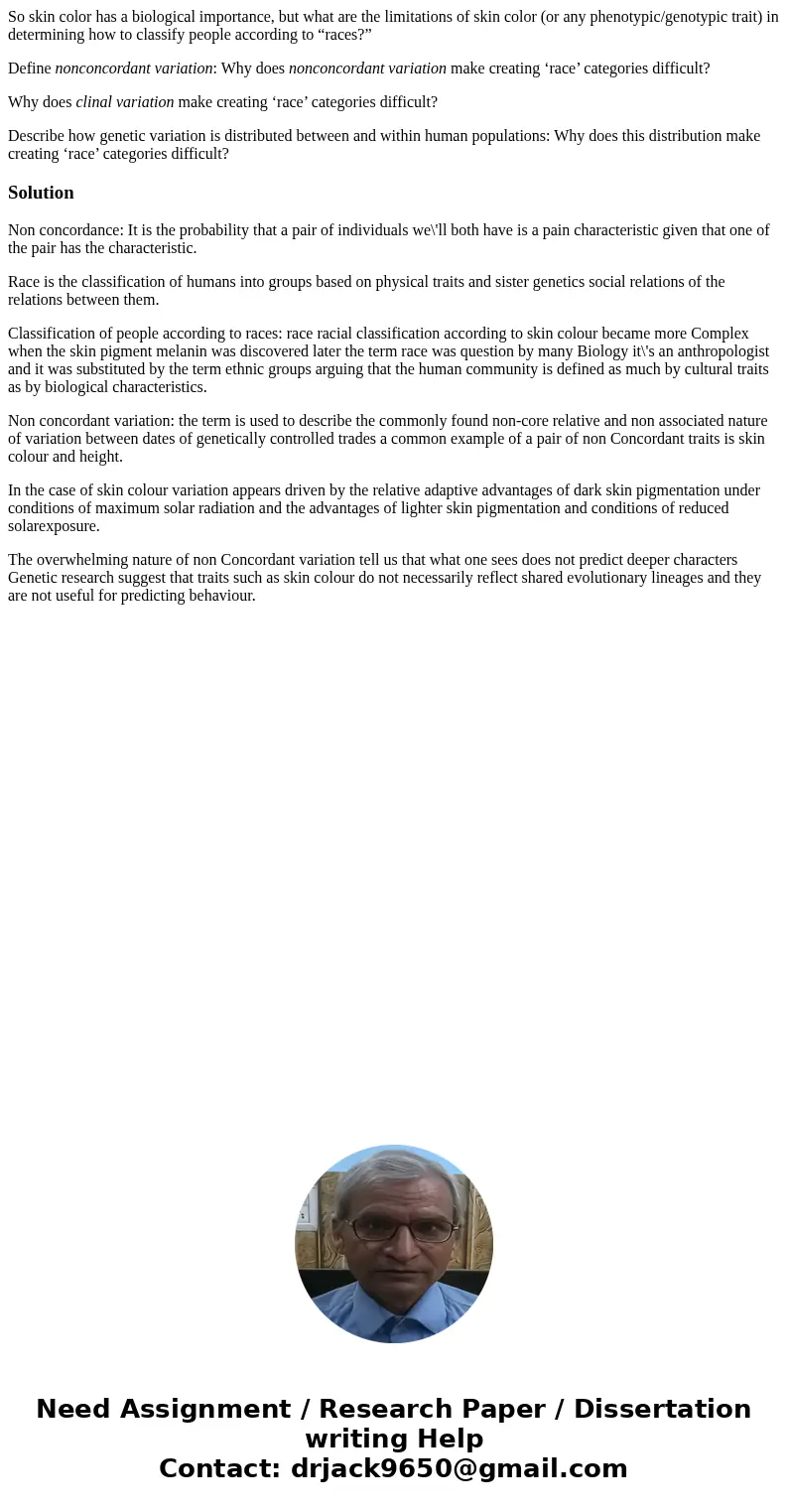So skin color has a biological importance but what are the l
So skin color has a biological importance, but what are the limitations of skin color (or any phenotypic/genotypic trait) in determining how to classify people according to “races?”
Define nonconcordant variation: Why does nonconcordant variation make creating ‘race’ categories difficult?
Why does clinal variation make creating ‘race’ categories difficult?
Describe how genetic variation is distributed between and within human populations: Why does this distribution make creating ‘race’ categories difficult?
Solution
Non concordance: It is the probability that a pair of individuals we\'ll both have is a pain characteristic given that one of the pair has the characteristic.
Race is the classification of humans into groups based on physical traits and sister genetics social relations of the relations between them.
Classification of people according to races: race racial classification according to skin colour became more Complex when the skin pigment melanin was discovered later the term race was question by many Biology it\'s an anthropologist and it was substituted by the term ethnic groups arguing that the human community is defined as much by cultural traits as by biological characteristics.
Non concordant variation: the term is used to describe the commonly found non-core relative and non associated nature of variation between dates of genetically controlled trades a common example of a pair of non Concordant traits is skin colour and height.
In the case of skin colour variation appears driven by the relative adaptive advantages of dark skin pigmentation under conditions of maximum solar radiation and the advantages of lighter skin pigmentation and conditions of reduced solarexposure.
The overwhelming nature of non Concordant variation tell us that what one sees does not predict deeper characters Genetic research suggest that traits such as skin colour do not necessarily reflect shared evolutionary lineages and they are not useful for predicting behaviour.

 Homework Sourse
Homework Sourse